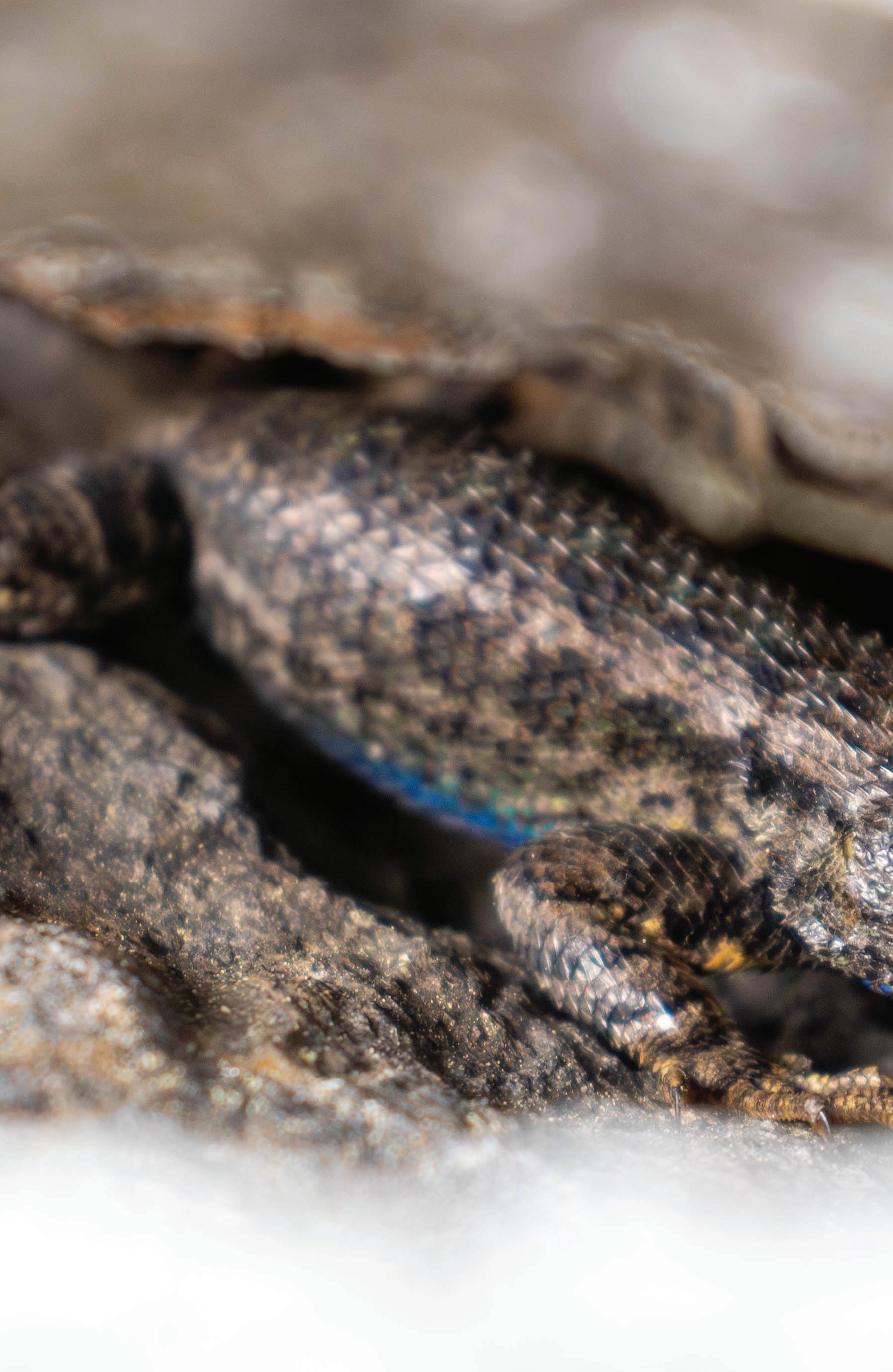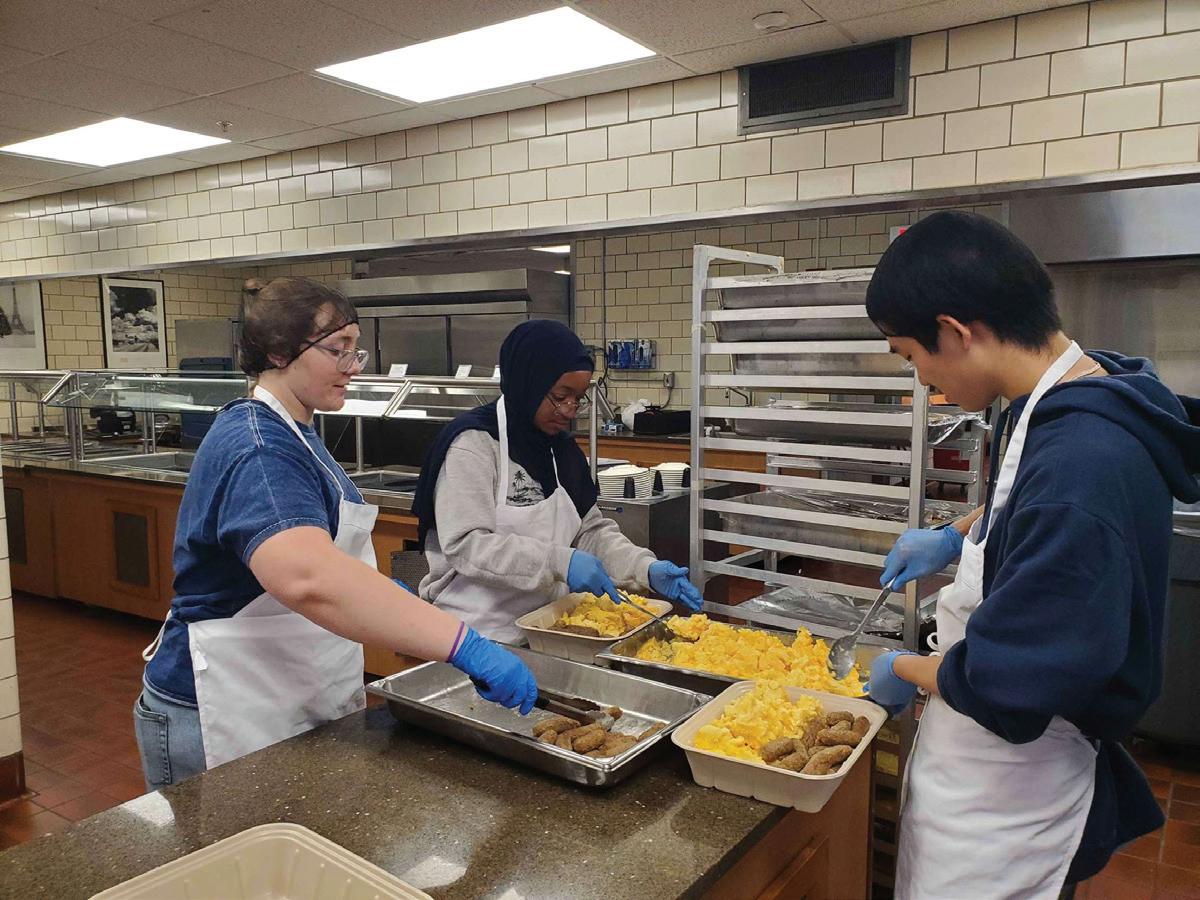

GREEN OBSERVER
Contributors




Editor-in-Chief
Sophia Beem
Lead Designer
Erin Nibeck
Contributors
Yesenia Adrianzen
Sophia Beem
Gabriel Doussard
Emily Mair
Ana Olsen
Josh Robinson
Sophia Simboli
Julia Spainhour
Gavin Volker
Protecting Our Mature and Old-Growth Forests
Julia Spainhour
The Mighty Toad
Sophia Beem
Nature Photography
Josh Robinson
Project for Less
Yesenia Adrianzen
Sitges
Emily Mair
Switzerland’s Landmark Climate Case
Gabriel Doussard & Ana Olson
How Walkable Communities Can Improve our Mental Wellbeing
Sophia Simboli
Gavin

By: Josh Robinson
Northern Saw-whet Owl
Vermillion County
Protecting Our Mature and Old-Growth Forests
By: Julia Spainhour
President Biden signed an executive order on April 22nd, 2022. In celebration of Earth day, he promised to conserve our mature and old-growth forests on federal lands throughout the nation. It’s entitled, “Executive Order on Strengthening the Nation’s Forests, Communities, and Local Economies,” and its pages recognize the critical importance of preserving American forests for our climate, ecosystems, and culture. Despite this, ongoing federal logging projects continue to threaten dozens of our national forests. Fifteen national environmental organizations contributed to a report titled, “Worth More Standing,” which highlights ten mature and old-growth forests currently facing federal logging projectson 240,000 acres of land. As these logging projects
continue to ravage through our forests, we are forced to bear the impacts.
Mature and old-growth forests are home to our oldest trees, reaching up to hundreds of years in age. These forests, which have been relatively undisturbed by human pressures, hold not only significant cultural value but also vital ecological importance. With complex canopy layers and diverse vegetation, they provide homes to thousands of species of plants and animals.
They are able to store significantly more amounts of carbon in tree trunks than younger forests, making them critical allies in the ongoing fight against climate change. They are also sources of clean drinking water,

regulators of the nutrient cycle, and providers of oxygen. Furthermore, these forests also hold personal meaning to many people. They’re where we go to connect with nature, where we hike, camp, fish, and enjoy the environment around us, and they hold particular significance to a variety of Indigenous cultures throughout the country. There is no doubt that these are indispensable ecosystems that need to be protected.
Nevertheless, 90% of oldgrowth forests that covered the lower 48 states in 1600 have since been cleared. Their timber is an economically valuable resource for corporations
seeking profits, but this comes at the cost of these brilliant landscapes. The National Old Growth Amendment, or NOGA, is a proposal by the U.S. Forest Service to restrict logging in old-growth forests taking effect in early 2025. While the current amendment is a step in the right direction, it falls short of including specific language that prevents timber companies from logging mature and old-growth forests on federal lands. With vague statements of a desired condition, they fail to include rules that specifically prohibit logging, and don’t extend protections to mature trees. This gives logging companies the opportunity to tear apart
Photo by: Environmental Law and Policy Center
hundreds of thousands of acres of these federal lands. The report, “Worth More Standing,” details ten logging projects in mature and old-growth forests across the country, especially in the western United States. This article will explore a case study of one of them, the Fourmile Project in the Chequamegon-Nicolet National Forest, which is uniquely situated in the Midwest.
Case Study: Fourmile Project in the Chequamegon-Nicolet
National Forest
The Chequamegon-Nicolet National Forest is a hallmark of Northern Wisconsin. Covering over 1.5 million acres of land, it is home to hundreds of species of animals, trees, and other vegetation. Many threatened and endangered species live here, including the American marten, Red-shouldered hawk, and Grey wolf. Conserving the American marten is especially consequential, not only because they are the only endangered mammal in Wisconsin, but also because they are a valuable totem animal to the Ojibwe people, symbolized for their hunting prowess. Maintaining a habitat for these
“so
little mature and old growth forest remains, and more is set to be chopped down through the Fourmile Vegetation Project.”
creatures is necessary to ensure their survival and health of the greater ecosystem. The forest also holds memories for millions of people who have visited and found within the trees a connection with nature. Yet, so little mature and old growth forest remains, and more is set to be chopped down through the Fourmile Vegetation Project.
Approved in November 2020 under the Trump administration, the Fourmile Project allows 12,000 acres of land in the Chequamegon-Nicolet National Forest to be made available for timber contracts, with 1,000 acres eligible for clear-cutting. Two-thirds of this land consists of mature and old-growth forests. The Forest Service estimates that over 80% of the logging from this project will go toward producing pulp for paper products, despite there being no immediate market need. The Forest Service did not account for climate impacts in the approval of this project.
Last September, the Environ-

Mature Trees at the ChequamegonNicolet National Forest
mental Law & Policy Center and twenty eight other allied environmental organizations put forth a petition urging the Biden administration to halt the project until a proper environmental analysis can take place. In response, the Forest Service opened a public comment period, which recently ended. Now, the fate of the project hangs in the balance as the Forest Service reviews the public feedback.
While President Biden’s executive order is a promising step toward safeguarding our nation’s forests, federal logging projects like the Fourmile Project highlight the gap between policy and action. Protecting mature and old-growth forests is not only essential for maintaining biodiversity and mitigating climate change but also
for preserving cultural and personal connections to nature.
As an individual, you can take action by supporting environmental organizations advocating for forest protection, such as the Environmental Law & Policy Center. You can contact your local representatives to demand stronger regulations that explicitly protect mature and old-growth forests, ensuring that logging projects like Participate in public comment periods, voice your concerns, and share information to raise awareness about the threats to our forests. By staying engaged and advocating for the preservation of these vital ecosystems, you can collectively pressure lawmakers to align their actions with the urgency of the climate crisis and environmental conservation.
America’s vanishing climate forests. Public Interest Network. (n.d.). https://publicinterestnetwork.org/wp-content/uploads/2022/11/11_12_22_Americas_Vanishing_Climate_Forests_.pdf
Forest Service must reconsider approval of Fourmile logging in NE wisconsin: ELPC. Environmental Law & Policy Center. (2023, September 21). https://elpc.org/news/forest-service-must-reconsider-approval-of-fourmile-logging-in-ne-wisconsin/ Redman, H. (2024, February 16). Environmental Group alleges illegal logging in Chequamegon-Nicolet National Forest • Wisconsin Examiner. Wisconsin Examiner. https://wisconsinexaminer.com/2024/02/15/environmental-group-alleges-illegal-logging-in-chequamegon-nicolet-national-forest/ 12,000 Acres of Chequamegon-Nicolet National Forest Under Threat. Sierra Club. (n.d.). https://www.sierraclub.org/wisconsin/ blog/2020/07/12000-acres-chequamegon-nicolet-national-forest-under-threat#:~:text=Instead%2C%20however%2C%20 the%20US%20Forest,by%20the%20Forest%20Service%27s%20EA Petition letter for reconsideration of the fourmile project. Environmental Law & Policy Center. (n.d.). https://elpc.org/wp-content/ uploads/2023/09/ELPC-CNNF-Fourmile-Letter-Reconsideration-FINAL.pdf
Davis-Reid, H. (2023, November 17). Conservationists renew push to protect old growth forests and stop Fourmile Project. WXPR. https://www.wxpr.org/energy-environment/2023-11-10/conservationists-renew-push-to-protect-old-growth-forests-and-stop-fourmile-project
Gallagher , A. M., & Copenheaver, C. A. (n.d.). What do we mean by “Old growth”? National Parks Service. https://www.nps.gov/ articles/000/what-do-we-mean-by-old-growth.htm
Montaigne, F. (n.d.). Why keeping mature forests intact is key to the Climate Fight. Yale E360. https://e360.yale.edu/features/whykeeping-mature-forests-intact-is-key-to-the-climate-fight
The Mighty Toad

By: Sophia Beem
I stand on the shore of Two Medicine Lake in Glacier National Park at dusk, dark water lapping gently at blue and purple pebbles. A ranger is telling my family about the history of this place, reminding us, once more, that the glaciers are melting–quickly. We already know this, of course. I notice a tiny black toad hopping across the rocks near the tree line at the edge of the lake. What is he doing here? It’s cold, almost freezing, at an altitude of more than 5,164 feet. He seems to tilt up his head and give a look, like I shouldn’t be surprised that a toad lives in the mountains.
At home in Illinois, toads are our pals. They show up under our outdoor lights and eat bugs. They have serious if not dour dispositions, perhaps letting us know it’s not easy being slow, warty, and slightly rolie-polie. I have known this mountain toad’s cousins in the Midwest, the deserts of the South, the tropics of Florida. Indeed his relative was the first animal I handled without parental supervision at three years old after finding one in the yard. It peed in my hand and hopped away and I was delighted nevertheless. Toads, it seems, are everywhere.
Resilient in all environments, the mighty toad has adapted a range of defenses allowing it to thrive. Like all amphibian larvae, toads metamorphosize from egg to adult form. However, they
grow from aquatic tadpoles into adults with dry skin armor that helps them retain moisture to thrive in terrestrial environments, making them unique among amphibians. They are also equipped with a secret weapon. Toads have parotoid glands behind their eyes on their backs appearing as little warts. Depending on the species, the parotid gland secretes a number of alkaloid substances which act as neurotoxins to deter predation. I’ve only ever known a dog to catch a toad once before quickly learning to leave those bumpy critters good and alone.
These squat-bodied creatures have a long evolutionary history. You wouldn’t know it from the declining population of amphibians today, but for millions of years during the Carboniferous period, amphibians were the dominant land animals on Earth. The damp climate of this geologic period supported the “Age of Amphibians.” Perhaps modern amphibians are nostalgic for these halcyon years of yore, but toads have sought their own path forward, adapting to a range of habitats and living as primarily terrestrial creatures. Antarctica is the only continent without them, so of course, my mountain toad friend is nothing out of the ordinary.
“Perhaps modern amphibians are nostalgic for these halcyon years of yore, but toads have sought their own path forward”

The toad is unconcerned and resolute, but you can see in his eye a hint of concern for his amphibious relatives. What about the frog? What about the salamander? Amphibians are directly impacted by climate change consequences on the world’s water. Systems these creatures rely on are changed by unpredictable rainfall, rising sea levels, floods, droughts, pollution, and melting glaciers like those near Two Medicine Lake. They need standing water for breeding, food, and cover. The toad is fairly confident that he would be the last to go. When the ponds dry up and the frogs and salamanders die, the toad will linger in shallow mud pits and puddles.
All of the amphibians are threatened by rapid changes in weather and the state and health of their water supply. While the toad makes his way in the world with the burly confidence of an armored knight, he knows he is not immune to climate change. Although he is certain he will outlive us mere homo sapiens, he hopes for a future where he can continue to hang out with his cousins at a pond when the mood strikes him. Maybe hop under porch lights for an easy meal, and occasionally pee on little kids’ hands. The toad has lessons for us about resilience, adaptability, and the vitality of water, so let us hope we can listen as we shape the future of this planet.
Amphibian Survival Alliance. (2024, July 5). Climate change emerges as major driver of amphibian declines globally, according to watershed paper published in Nature. Amphibian Survival Alliance. https://www.amphibians. org/news/climate-change-emerges-as-major-driver-of-amphibian-declines-globally/#:~:text=Habitat%20destruction%20and%20disease%20are,threats%20to%20frogs%2C%20salamanders%2C%20and Strauss, B. (2019, August 15). 300 million years ago, giant amphibians ruled the Earth. ThoughtCo. https://www. thoughtco.com/300-million-years-of-amphibian-evolution-1093315 Toads. National Wildlife Federation. (n.d.). https://www.nwf.org/Educational-Resources/Wildlife-Guide/Amphibians/Toads#:~:text=They%20differ%20from%20most%20frogs,and%20allergic%20reactions%20in%20humans

By: Josh Robinson
Wild Geranium
Busey Woods, Urbana



Above: Western Rattlesnake (Stanislaus National Forest, CA)
By: Josh Robinson
Left: Western Fence Lizard (Stanislaus National Forest, CA)



Top to Bottom: Common Whitetail (Allerton Park), Chickweed Geometer Moth (South Arboretum Woods), Versute Sharpshooter (Backyard Prairie Restoration, Southern IL)
Right: Periodical Cicada (Allerton Park)

By: Josh Robinson

By: Josh Robinson
Red-banded Leafhopper Pollinatarium

Project for Less
By: Yesenia Adrianzen
You’ve probably experienced enjoying “delicious” food at the dining halls. You swipe your card, or at least try until the bored worker waves you through, then stand in a long line till you can finally sit to enjoy the food. However, have you ever wondered where all the untouched food from thousands of students goes? Or, more so, how it impacts the environment. Project for Less is a student-run food recovery
operation that helps dining halls get pre-consumer food, or waste produced in manufacturing a product, to local food pantries. Pre-consumer food goes untouched or refers to waste produced in manufacturing a product. Project for Less helps battle the ongoing issue of food waste.
Project for Less goes to the LAR/Allen Dining Hall every Wednesday to package food for
by:
Photo
Jenna Schaefer
“By gathering leftover food from student dining halls and giving it to CU community residents in need, their organization helps to close the gap between food insecurity and waste.”
local food pantries. Back in 2017, they received $17,000 from a university grant to purchase cold carts and packing supplies. This was a significant milestone, marking the beginning of their impactful journey. Thus, they were able to package 60+ meals in total every Wednesday from 5-7pm. The food is stored in refrigerated cold carts after packaging to ensure that the food doesn’t spoil. Then, the next day, a special student dining truck with outlets to plug into these carts transports the food from LAR to Wesley Food Pantry. Project for Less transports their packaged leftover dining hall meals to Wesley Food Pantry on campus. It is a part of Wesley United Methodist Church and Student Center, located in the heart of the Illinois campus. They strive to provide an open and welcoming environment for all to gather, worship, study, and serve together. By gathering leftover food from student
dining halls and giving it to CU community residents in need, their organization helps to close the gap between food insecurity and waste.
Most food waste produced by student dining halls is often thrown out. The average American citizen wastes about 1 lb of food daily, which “equates to…206 billion pounds of food waste generated in America” just in 2017. This is about 3040% of the food supply (USDA). This issue has adverse effects, such as the university losing money, time, energy, personnel, and resources, a problem unique to our community and a nationwide concern. Thus, food waste is an issue that needs to be explicitly addressed in our country.
Additionally, according to Feeding America’s “Map the Meal Gap project,” Champaign County suffers from a 12.7 % rate of food insecurity, which equates to a population of 26,200 residents who are never sure where to get their next meal (Hunger & Poverty in Champaign County, Illinois | Map the Meal Gap, 2024). Thus, Project For Less helps to reduce food insecurity and waste by collecting leftover food from student dining
halls and giving it away to community members in need.
However, food waste is not just a social or humanitarian concern but also an environmental one. When food goes to waste, so does all the energy and water it takes to grow, harvest, transport, and package it. When food rots in landfills, it releases methane, a GHG 28 times more potent than carbon dioxide (CO2) when trapping heat in the atmosphere. The EPA estimates that food waste is responsible for 58% of landfill methane emissions – about more than half (Quantifying Methane Emissions From Landfilled Food Waste | US EPA, n.d.). Thus, it is blatantly urgent to navigate food waste. Preventing food waste is one of the most effective ways to reduce its environmental impact.
After attending one of my first general meetings, I got to catch up with Micheal Basharis, a general member, about his experience within this organization. He enthusiastically shared how his experience was so far. He “genuinely enjoys it” because “it’s satisfying to know that people are benefiting from our work” and that being able to give back to the community
is “meaningful.” Micheal stated, “I genuinely enjoy it, and it’s very satisfying to know that people are benefiting from our work.” As Micheal said, this organization has a meaningful impact on its local community, making one feel proud and helpful in our big little world.
“When food goes to waste, so does all the energy and water it takes to grow, harvest, transport, and package it.”
Yet, of course, the question arrises of whether they only package food at the LAR/Allen dining hall. Do they want to expand more? Have they tried? Jenna Schaeffer, a graduate student who has served many years in a leadership role for Project For Less, shared that while they would love to develop more of their service to help combat food insecurity and waste, it’s not easy. Money, costs, and logistics come into play. Jenna highlighted that the dining halls have these special trucks that can transport the food with a refrigerated outlet to keep the food fresh for the people who need it. The barrier of expansion to other dining halls across campus is being imposed, and the supply for
that truck is required. Nevertheless, it’s hopeful they can allocate the funds to expand into more dining halls to spread even more meaningful work.
When asked about other universities who partake in this matter, she stated, “We belong to this nationwide organization called Food Recovery Network where it’s like there are different chapters at a lot of different schools, but Project for Less was founded before finding out about the Food Recovery Network.” The Food Recovery Network is one of the most significant student-led movements mobilizing against hunger and food waste within the U.S. Their mission statement on their website states, “Unites 8,000+ college students, food suppliers, farmers, and local businesses across the U.S. in the fight against climate change and hunger by recovering surplus food from across the supply chain and donating it to local nonprofit organizations that feed people experiencing hunger.” (Our Story —
Food Recovery Network, n.d.). Talking to passionate volunteers was incredibly inspiring to know that students can make a difference within our community, and furthermore, knowing that we are a part of a nationwide program that exists to fight this battle of food waste and insecurity is fascinating.
Project for Less is actively trying to reduce food waste by giving extra food to people in need, ensuring that wholesome meals are not thrown away but can play an essential role in the community. Together, this organization creates a sustainable and ethical campus community, a cause we can all be proud to support. They serve as a model for how educational institutions can effectively combat food hunger and environmental issues, inspiring us to do our part.
Cooper, R. (2020, August 25). Food Waste in America: Facts and Statistics. Rubicon. Retrieved September 19, 2024, from https:// www.rubicon.com/blog/food-waste-facts/ Hunger & Poverty in Champaign County, Illinois | Map the Meal Gap. (2024). Retrieved October 17, 2024, from https://map.feedingamerica.org/county/2022/overall/illinois/county/champaign
Our Story — Food Recovery Network. (n.d.). Food Recovery Network. Retrieved September 22, 2024, from https://www.foodrecoverynetwork.org/what-we-do
Quantifying Methane Emissions from Landfilled Food Waste | US EPA. (n.d.). Environmental Protection Agency (EPA). Retrieved October 17, 2024, from https://www.epa.gov/land-research/quantifying-methane-emissions-landfilled-food-waste

“Sitges”
By: Emily Mair
Pastel on paper

Russian sage Seen on campus
Switzerland’s Landmark Climate Case

By: Gabriel Doussard & Ana Olson
On April 9th, 2024, the European Court of Rights (ECHR) ruled that Switzerland has a positive obligation to enact laws and measures against climate change. This case was brought by a group of senior women, arguing the Swiss government is not doing enough to mitigate the effects of climate change. Unprecedented and influential, the KlimaSeniorinnen ruling allows youth and other disproportionately affected groups to have the power to act in a world rapidly transforming from climate change.
“Prior to the KlimaSeniorinnen case in Switzerland, a climate case had never been successful in the ECHR.”
Prior to the KlimaSeniorinnen case in Switzerland, a climate case had never been successful in the ECHR. In the case Duarte Agostinho and Others vs. Portugal and 32 Other States, a small group of Portuguese youths brought a 2023 case against Portugal and many other states in the Council of Europe for not doing enough to prevent climate change. However, it was declared inadmissible by the ECHR for failing to
proceed through the necessary legal framework, as the ECHR can’t step in unless domestic remedies are exhausted.
After being ignored by the Swiss government after it was filed in 2016, the Klimaseniorinnen case was brought to the ECHR, filing under articles 2, 6, and 8 of the European Convention on Human Rights — the right to life, a fair trial, and family and private life, respectively — where it made it to the Grand Chamber of 17 judges. The Grand Chamber’s verdict found that Switzerland violated articles 6 and 8. The right to family and private life outlined in article 8 was infringed on due to excessive heat waves that disproportionately affected senior women, and, although not as salient, the Swiss government claimed that they had done enough to prevent climate change, and unjustly postponed the trial.
The judgment stated that Switzerland has “a legal obligation not just to pay those concerned the sums awarded by way of just satisfaction, but also to choose … the general and/ or, if appropriate, individual measures to be adopted in its domestic legal order to put an
end to the violation.” This ruling is not only unprecedented, but it is also extremely important for the precedent of future climate cases in Europe, as it outlines the positive obligation for states in the Council of Europe, the set of 46 countries that the ECHR has jurisdiction over across Europe, to actively combat climate change.
There have been both positive and negative reactions to the KlimaSeniorinnen ruling across Europe and the rest of the world. According to Corina Heri, a postdoctoral researcher in the Climate Rights and Remedies Project at the University of Zurich, there was massive backlash against the ECHR and the Swiss representative in the Grand Chamber as a result of the KlimaSeniorinnen case: the formerly acclaimed Swiss judge was ridiculed by the Swiss media for not conforming to the interests of the Swiss state, and Switzerland has threatened to leave the Council of Europe because they feel the ECHR is so far overstepping their jurisdiction.
“
This ruling is not only unprecedented, but it is also extremely important for the precedent of future climate cases in Europe”
The KlimaSeniorinnen ruling, the first of its kind, serves as a symbol for other cases around the world. Just a few days after the decision on April 9th, the case was already being cited in the Netherlands. The case is also critical in inciting marginalized or susceptible groups to action. For example, the KlimaSeniorinnen case was cited in the first ever East Asian youth climate case this summer, in the case of Do-Hyun Kim vs. South Korea, Heri says. This case is a landmark in climate action and law.
HUDOC - European Court of Human Rights. (n.d.). Hudoc.echr.coe.int. https://hudoc.echr.coe.int/eng?i=001-233206
HUDOC - European Court of Human Rights. (2024, April 9). Duarte Agostinho and Others Against Portugal and 32 Others. [Review of Duarte Agostinho and Others Against Portugal and 32 Others]. European Court of Human Rights. https://climatecasechart.com/ wp-content/uploads/non-us-case-documents/2024/20240409_3937120_decision-1.pdf
European Convention on Human Rights. (n.d.). European Convention on Human Rights [Review of European Convention on Human Rights]. European Court of Human Rights. Retrieved October 14, 2024, from https://www.echr.coe.int/documents/d/echr/ convention_eng
FULL BLEED SITE MAP
How Walkable Communities Can Improve Our Mental Wellbeing
By: Sophia Simboli
Many people underestimate the impact of living in a walkable community on mental health and overall well-being. Moving from a traffic-heavy, non-walkable city to a college campus where the main source of transportation is walking had an effect on me that I did not even know I needed. Having so many spaces to simply sit and study, or talk with friends for free, provides an easy source of vitamin D and allows students to leave their dorms during the day. With dorm rooms being so small, college students are already forced
to live in a confined area for the school year. Walking outside and immediately having sight of greenery can be refreshing for someone not used to that, especially in the Midwest.
Another benefit of a highly walkable community is increased social interaction. By going out on a walk, or exploring campus, I have met new people and formed new friendships, especially throughout the first semester of college. There are so many events and gatherings held outside! Compared to living in my hometown
where cars were the main form of transportation, going out was a much more limited option. I would only be able to see friends if a car was available and many places required me to spend money, which is not ideal especially as a college student. Physical activity such as walking releases endorphins, alleviating stress, anger, and pain. As many of us know and have experienced, college students have high levels of stress. So using walking as your main transportation throughout campus, especially on a day with good weather, can ease it and provide some relaxation.
Physical activity such as walking releases endorphins, alleviating stress, anger, and pain.”
Along with stress, depression is a common struggle for many students and Americans. According to the Bureau of Labor Statistics, 18.5 million Americans have office
jobs. This means 12% of the U.S. are sitting at a desk inside for 8 hours of the day. This is one of the reasons why depression is such a prevalent issue because many people living in the United States are forced to be isolated from the outdoors for at least 8 hours a day. So many of us experience deficiency from the sun that we have to take days off just to go to the beach or spend some time in a warmer climate.
Another benefit of walkable cities is the decreased amount of carbon emissions from vehicles. Writer Abby Mader from Keppel Health Review covers how walkable cities benefit health and the environment by stating, “Walkable cities have proven themselves as a sustainable solution to many health issues prevalent in urban areas. Cities that are more walkable can help reduce the production of pollutants by reducing the number of cars on the road” (Mader 8). The World Health Organization also claims that the leading cause of pollution on
this planet is the excessive use of vehicles, which emit massive carbon emissions. One step to bettering our planet and our mental well-being is to ditch cars and walk more when we can.
Easily accessible communities can also improve physical health. A research study conducted at the University of Maryland used Google Street Views to gather information on how communities affect physical and mental health. Qunyh Nguyen, an associate professor in the study states, “Our results suggest neighborhood walkability and urban development are connected with lower chronic disease, better mental health and reduced smoking, while single lane roads, which are an indicator of less urban development, are associated
“the leading cause of pollution on this planet is the excessive use of vehicles”
with higher levels of chronic disease,” (Nguyen 3). Along with the mental benefits, towns that are easily accessible also provide physical health benefits.
If this topic was covered more, especially in the media, people may place this issue at a much higher importance. One step we can take towards this solution is spreading the word and doing research on our own on the benefits of walkable cities, as it has greatly improved my mental health living in one, along with many others that I know. Putting effort into the Earth and the spaces that surround us pays off!
Mader, A. (2022, July 31). Health benefits of Walkable Cities. Health benefits of walkable cities. https://www.keppelhealthreview. com/spring2022/walkable-cities?format=amp Nguyen, Q. (2023). Leveraging 31 million Google Street View images to characterize built environments and examine county health outcomes. Public health reports (Washington, D.C. : 1974). https://pubmed.ncbi.nlm.nih.gov/33211991/ World Health Organization. (2024). Ambient air pollution. World Health Organization. https://www.who.int/data/gho/data/themes/ topics/indicator-groups/indicator-group-details/GHO/ambient-air-pollution#:~:text=Most%20fine%20particulate%20matter%20 comes,industry%2C%20households%20or%20biomass%20burning
The Necessity of Diverse Thought

By: Gavin Volker
Imagine you’re trying to find your people in a political activism space. You walk into a meeting, they get your name, and immediately ask, “What kind of Leftist are you?” The correct response is talking about the main causes you support and not saying what esoteric brand of political ideology you deemed to be correct. In a world of eight billion people, it will always be a losing game when you assign yourself a fringe label.
You can walk into Revolutionary Marxism-Leninism club and you’ll find people asking, “Yeah but do you prefer Revolutionary Marxism-Leninism-Maoism or Revolutionary Marxism-Leninism-Hoxhaism?” and you’ll get called a Liberal and be excommunicated if you answer incorrectly. But what happens to movements that self-isolate in this way? The answer is that they either die or progress stalls so hard that they are effectively dead.
A key factor in what makes
some movements more effective than others is openness to conflicting opinions among members. It is important to remember that movements are built by the tens, hundreds, and thousands. There must be room for multiple, competing but ultimately related, philosophies in every space if there is a desire to succeed. There are few things more vital than having people with differing views working together to achieve a goal, as homogeneity has the potential to kill the most noble of movements.
Black Lives Matter is a prime example of a movement that has a diverse base and sees success. After the murder of George Floyd, 31 of America’s 100 largest cities restricted officers’ use of chokeholds, according to Campaign Zero, an anti-police violence advocacy group. New York state repealed a former law that hid officer disciplinary records from the general public. In 12 states, officers have a duty to intervene in cases of excessive force,
potentially carrying criminal liability if they do not step in. None of these changes would have occurred if millions didn’t march in the streets for justice and there would not be millions able to march if the movement required them to be ideologically pure.
General climate activism is another example of broad coalitions of individuals, organizations, and institutions fighting an existential threat. Would the Inflation Reduction Act have included $369 billion for clean energy, jobs, communities and the climate without a good chunk of the nation espousing the need for it? The answer is likely no.
“one must remember that activism doesn’t have to involve incredible amounts of people.”
While the two movements listed are national and international, one must remember that activism doesn’t have to involve
incredible amounts of people. It’d be foolish to look past an example of a movement here on campus that has diverse thoughts within it and is making progress because of it. The campaign to get the University of Illinois divested from fossil fuels is inclusive of everybody. In the group spearheading it, you have people who wrote Illinois House Bill 5268 which would force the university to divest upon its passing, you have people who are rallying the student population, and you have people meeting with administrators to discuss the financial benefits of divestment. It is because these ideologies have coalesced into a strong and stable movement that the university can no longer ignore them.
When you are signaling that only one perspective is valid, you also signal that your movement is so fickle that it can’t withstand critique from those who mostly agree with you. Then what happens when your opponents put on any amount
of pressure? The movement will crumble as its fate was doomed from the start. Having a diverse range of perspectives while organizing for one specific cause can aid in strengthening the movement as a whole.
In a time when the United States is already so divided, it becomes increasingly important to provide a space where people’s ideas can be challenged and given a space to evolve. The benefits of having non-confrontational, nuanced discussion should never be discounted. Through this discussion, interpersonal bonds are strengthened within the movement; not only do members build a mutual respect for each other, but they also learn to operate within a framework involving empathy. An additional benefit yet to be mentioned is how discussion is practice for communication skills. An individual engaged in a respectful discussion learns how to defend their stances and convey ideas in a concise and understandable way. This is a
An individual engaged in a respectful discussion learns how to defend their stances and convey ideas in a concise and understandable way.” “
vital skill to always work on as one campaigns for any change.
It should be expected that conflict will inevitably arise from differences in opinion, but ultimately we should be grateful for it. Conflict is something to be appreciated because there the blessing of choice exists. The alternative to ideological conflict is a hivemind or groupthink, depending on whether everyone has the same perspectives or simply pretends they do in order to avoid confrontation. With individuals openly holding various beliefs, movements can attempt multiple strategies simultaneously to garner support and enact change. Similar to how a stool cannot be supported by one leg, a movement cannot be supported by one ideology.

Vervain Seen on campus

Photo by: Erin Nibeck
